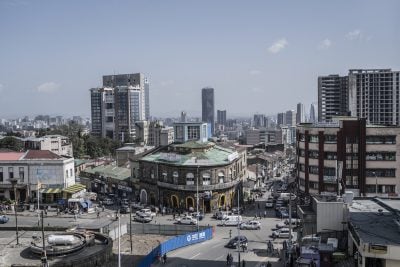The East African Community, comprising Kenya, Tanzania, Uganda, Rwanda and Burundi (and soon to be joined by South Sudan), is emerging as one of the most dynamic growth poles in Sub-Saharan Africa. The pace of investment and trade expansion has accelerated over the past three years as the wider market has become more easily accessible to importers and exporters. In tandem, banks across the region have also been growing and generating record profits. But competition is fierce and a consolidation of some sort is very likely in the near future.
The banking industry in East Africa, compared to its counterparts in the north, west and south, has been chugging along merrily for the last couple of decades without demonstrating the kind of spectacular dynamism shown elsewhere on the continent.
By the same token, it has been more stable than, say, the often erratic brilliance of Nigerian banking or the juggernaut that is South African banking.
But the pace has quickened over the past three years or so as the East African economies have expanded and regional integration is gathering momentum. The addition of South Sudan – when the formalities are completed later this year – to the East African Community and the imminent commissioning of oil in Uganda has changed the outlook to a far brighter one than had been the case four years ago.
The near-term future for the region is also full of promise. Once the Lamu Port-South Sudan Ethiopia corridor, with its rail and pipeline links (Lapsset) is completed, a growth range of 8-10% becomes perfectly feasible.
This will allow the industry to both deepen and expand. HSBC, one of the largest banking groups in the world, has established a presence in Nairobi from where it will serve the subregion. It will join the other two multinationals, Barclays and Standard Chartered, to service big-ticket infrastructure projects and underwrite business for the increasing number of multinationals establishing footprints in the subregion.
Renaissance Capital has purchased a banking licence and JP Morgan has been giving the region considerable thought. “There’s a lot of focus on Africa because our senior management sees a significant growth opportunity over the next 10 years and we’re seeing our clients increasingly move here, be it an Indian or a German multinational,” says John Coulter, JP Morgan’s chief executive for sub-Saharan Africa.
On the domestic front, Kenya Commercial Bank (KCB) has been the most adventurous in its forays abroad. It has 19 branches in South Sudan, 14 in Uganda, 11 in Tanzania, nine in Rwanda and 169 in Kenya.
Not far behind is Kenya’s Equity Bank which began life as a micro-lender and has grown to become the fifth largest, by capitalisation, in East Africa. It has branches in Rwanda, Tanzania, Uganda and South Sudan.
The biggest bank in the subregion is Mauritius Commercial Bank with core capital of $591m followed by the Commercial Bank of Ethiopia with $450m and 413 branches across the country.
Excellent profits
By and large, profitability has been good – KCB made a profit of $60m in the first half of 2011, a 30% increase on the previous figures.
Diamond Trust Bank, with branches in Tanzania, Kenya, Uganda and Burundi, recorded a rise in profits of 80%, from $22.4m in 2009 to $41.25m in 2010. But some believe Kenya has too many banks and some form of consolidation is called for.
Martin Oduor-Otieno, KCB chief executive, says: “Competition is vicious. There is a false notion that banks are having it very easy and making lots of money. People think there is a easy money here but there isn’t; it’s a real struggle.”
With the majority of banks offering similar services, competition has come down to pricing and quality of service. “Consumers are driving down margins very aggressively, particularly where they have the muscle.”
Whatever is good news for the customers is ultimately good news for the industry. Rwanda has removed virtually all barriers to banks wishing to move into one of the continent’s most improved economies. The National Bank of Rwanda announced last year that banks had made a combined pre-tax profit of $21.6m in 2010, which was a 300% increase on profits made the previous year.
Want to continue reading? Subscribe today.
You've read all your free articles for this month! Subscribe now to enjoy full access to our content.
Digital Monthly
£8.00 / month
Receive full unlimited access to our articles, opinions, podcasts and more.
Digital Yearly
£70.00 / year
Our best value offer - save £26 and gain access to all of our digital content for an entire year!
 Sign in with Google
Sign in with Google 


